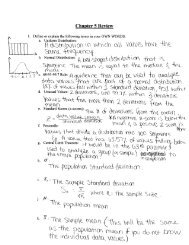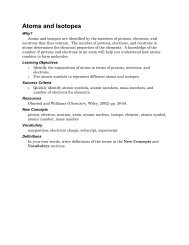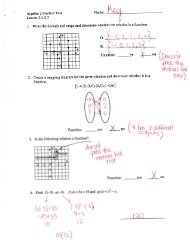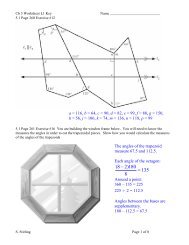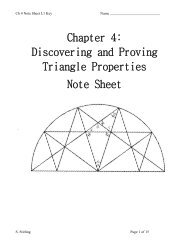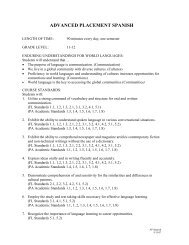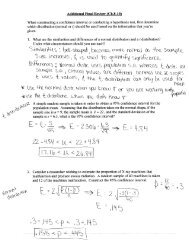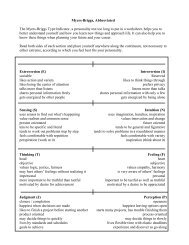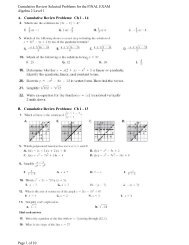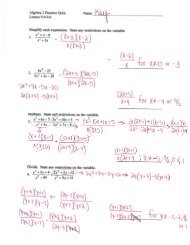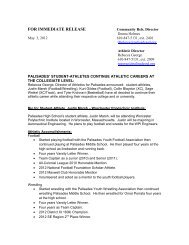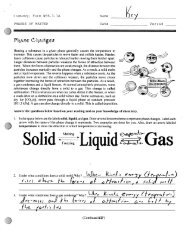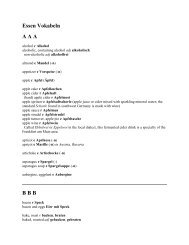Create successful ePaper yourself
Turn your PDF publications into a flip-book with our unique Google optimized e-Paper software.
6. If you had 17.3 g of hydrogen and 8.91 g of oxygen, which is the limiting reactant, and how<br />
many grams of water could you produce?<br />
17.3 g H2<br />
2.02 g/mol<br />
8.91 g O2<br />
32.0 g/mol<br />
=<br />
=<br />
8.56 moles H<br />
2<br />
0.278 moles O<br />
2<br />
The O 2 is the limiting reactant in this case and 0.557 mole water or<br />
0.557 g water × 18 g/mol = 10.0 g water would be produced.<br />
Problems<br />
1. Cisplatin is an antitumor agent. It has the molecular formula Pt(NH 3 ) 2 Cl 2 . How many grams of<br />
cisplatin can be produced if the limiting reactant is 1 kg of platinum?<br />
1000 g Pt<br />
195.08 g/mole =<br />
5.126 mole Pt<br />
1 mole Pt(NH<br />
5.126 mole Pt<br />
3 ) 2Cl<br />
×<br />
2 300.0474 g<br />
×<br />
1 mole Pt 1 mole Pt(NH 3 ) 2Cl2<br />
=<br />
1538 g Pt(NH 3 ) 2Cl 2 produced.<br />
2. Hydrogen cyanide is used in the production of cyanimid fertilizers. It is produced by the<br />
following reaction.<br />
2 CH 4 + 2 NH 3 + 3 O 2 2 HCN + 6 H 2 O<br />
a) How much hydrogen cyanide can be produced starting with 100 kg of each of the<br />
reactants?<br />
100 kg CH 4 = 6233 mol CH 4<br />
100 kg NH 3 = 5872 mol NH 3 ,<br />
100 kg O 2 = 3125 mol O 2<br />
Look at the ratios<br />
6233<br />
methane:<br />
2<br />
= 3117<br />
5872<br />
ammonia:<br />
2<br />
= 2936<br />
3125<br />
oxygen:<br />
3<br />
= 1042<br />
2/3 of 3125 mol can be produced = 2083 mol of hydrogen cyanide, which is 56.3 kg HCN.<br />
b) Which is the limiting reactant?<br />
The smallest ratio is for oxygen, so the limiting reactant is oxygen.<br />
46<br />
Foundations of Chemistry




